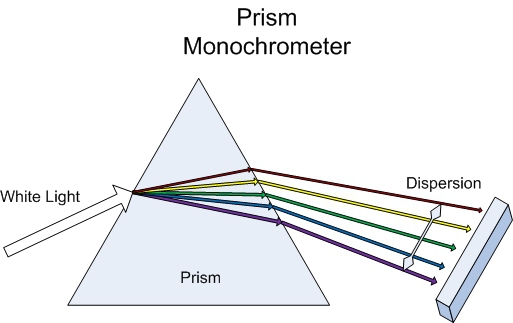Let's think, we have a detector array (128x1 and each cmos detector responds 400 to 1000 nm TSL1401CL that way, each detector has 4.6875 nm interval). Then, basically in a spectrometer a prism reflect the waves(visible and near-ir) after that, these reflected waves come to the detector array. I understand that. But I dont understand that how each reflected waves comes to the always same detector.(for instance 400 nm is on 1st one than 405 nm on 2nd one...). What kind of optical system assure it?


Question: Question: Spectrometer Desing
Deforme
is asking a question about spectometer
2 Comments
Log in to comment
That is a good question.
There are many factors that can change how the light interacts with the cmos. No optical system can assure it without some assistance. For a particular setup, the distance between the prism and the cmos detector can change, the prism can be bent differently, the source light might change, ambient light might leak in, and so much more.
There is no guarantee that a spectrometer will assign the correct cmos pixels to the correct wavelength frequencies until the user calibrates the spectrometer using a substance or light source with known wavelength peaks. Calibration should be performed anytime the spectrometer or the environment around the spectrometer changes.
Here are two links to learn more about spectrometer calibration for wavelength.
This is still a work in progress. Because there are so many factors which can change, there will always be something to improve.
Reply to this comment...
Log in to comment
Light is a wave, but think about it as particles. The 'beam' of light is aligned within a relatively narrow angle between a slit and the diffraction grating / prism. The camera / detector is in a fixed position, aligned so it sees the full-range of the spectrum. Now, glue it down inside a box so nothing can move.
The remaining variables are the light source aperture width (size), the slit aperture (width) and the orientation from slit to grating. If you imagine having a true collimated light source, that would help -- the slit only works best for small aperture sources at a significant distance from the slit. As you can see, the spectrometer works best when it is fixed position, fixed source alignment and then calibrated for frequency (CFL).
Reply to this comment...
Log in to comment